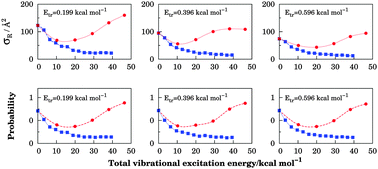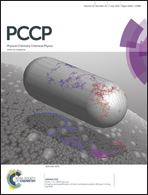A quasi-classical trajectory study of the OH + SO reaction: the role of ro-vibrational energy†
Abstract
A study of the OH + SO → H + SO2 reaction using a quasi-classical trajectory method is presented with the aim of investigating the role of the ro-vibrational energy of the reactants in the reactivity. The calculations were carried out using a previously reported global potential energy surface for HSO2(2A). Different initial conditions with one and both reactants ro-vibrationally excited were studied. The reactive cross sections, for each studied combination, are calculated and then fitted to a capture-like model combined with a factor accounting for the recrossing effects. The Vibrational Energy Quantum Mechanical Threshold of the Complex method was used to correct for the zero-point vibrational energy leakage of the classical calculations. State specific and averaged rate constants are reported. The reactivity is affected when ro-vibrational energy of either of the reactants is changed. The present calculations provide a theoretical support for the experimental rate constant for temperatures below 550 K, but fail to account for the significant fall in the observed rate constant upon increasing the temperature above this value.


 Please wait while we load your content...
Please wait while we load your content...